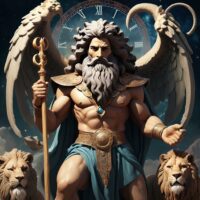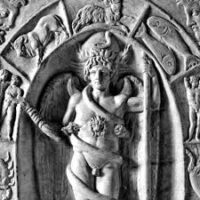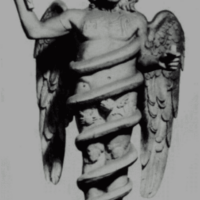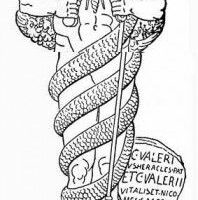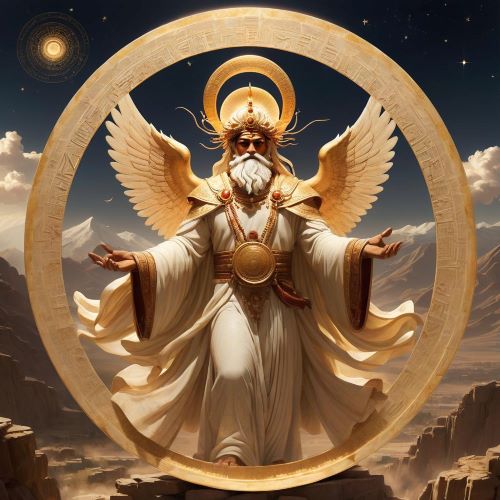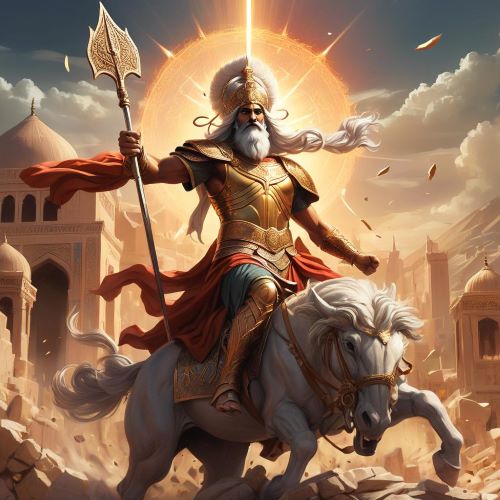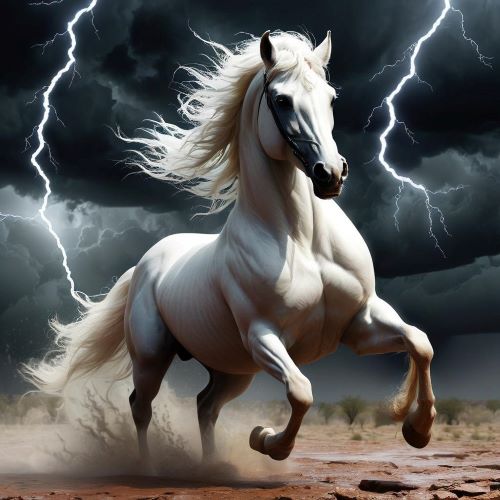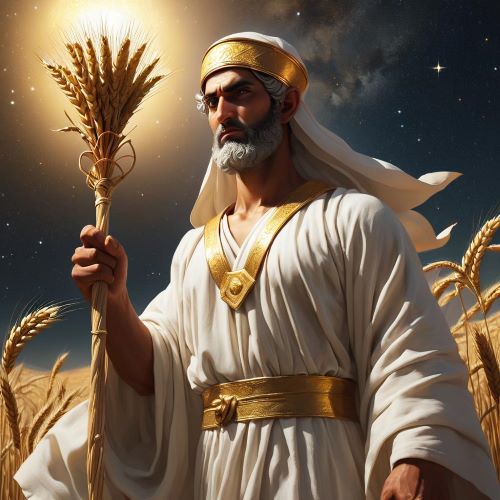Zurvan : God of Time
Listen
At a glance
| Description | |
|---|---|
| Origin | Iranian Mythology |
| Classification | Gods |
| Family Members | Ahura Mazda and Angra Mainyu (Children) |
| Region | Iran |
| Associated With | Time, Destiny, Order |
Zurvan
Introduction
Zurvan, the deity of infinite time and space in Zurvanism, a fatalistic branch of Zoroastrianism, was a transcendental and neutral god, devoid of passion or moral distinctions. His name originates from the Avestan word for “time.” As a primordial figure in Iranian mythology, he embodies both creation and destruction, symbolizing the endless cycle of existence. The mythology surrounding Zurvan is intricate, reflecting ancient Iranian beliefs about time, destiny, and the structure of the cosmos.
Physical Traits
Zurvan is depicted in various forms, each embodying different aspects of time and existence. One prominent image shows him as a winged, lion-headed figure encircled by a serpent, symbolizing the Sun’s movement and the eternal cycle of time. In some interpretations, he has a human face with feminine hair secured by a bronze headpin, emphasizing his androgynous nature. A surviving myth even describes him as both male and female. The lion’s head represents strength and authority, while his wings signify transcendence beyond the physical world. The serpent coiled around him reflects the continuous flow of time and cosmic interconnectedness. Often, Zurvan is also shown holding a staff or a ring, reinforcing his role as the arbiter of time and destiny.
Family
In Zurvanite mythology, Zurvan is the progenitor of Ahura Mazda and Angra Mainyu, embodying the concept of infinite time from which both good and evil emerge. Ahura Mazda, the god of wisdom and light, stands for order and righteousness, while Angra Mainyu, the spirit of chaos and darkness, represents destruction and corruption. This duality reflects the cosmic struggle at the heart of Zoroastrian belief. The “twin brother” doctrine in Zurvanism suggests that since these opposing forces are siblings, they must originate from a singular, neutral source—Zurvan himself. As the embodiment of time, he transcends morality, allowing both creation and destruction to unfold within the universe.
Other names
Zurvan, the deity of infinite time and space, was often described as “one” or “alone,” signifying his singular and all-encompassing essence. Across various traditions, he is known by different names, such as Zurvān, Zruvān, or Zarvān in Middle Persian, while in Avestan, his name appears as zruuān, meaning “time.” Some texts refer to him as “Limitless Time” or “Infinite Time,” underscoring his boundless and eternal nature. These titles highlight his fundamental role in mythology as the ultimate force governing creation, destiny, and the passage of time.
Powers and Abilities
Zurvan, as the embodiment of time and space, wields immense power, particularly in Zurvanism, where he is regarded as the supreme deity. His abilities include absolute control over time, space, and destiny, allowing him to dictate the flow of existence. As a transcendent force, he governs both creation and destruction, overseeing the birth, growth, and eventual decay of all things. His influence extends beyond the physical realm, encompassing higher-dimensional manipulation and true omnipresence. Associated with elemental forces like fire and wind, Zurvan symbolizes the fundamental energies that shape the universe, reinforcing his role as the ultimate cosmic force.
Modern Day Influence
Although Zurvanism as a religious sect has faded, its ideas continue to shape modern thought and culture. The figure of Zurvan still appears in religious and philosophical discourse, particularly in Manichaean traditions, where his name is preserved in liturgical texts. His influence extends beyond theology into academic and commercial spheres. The name “Zurvan” has been adopted in interdisciplinary sociology to describe agent-structure interactions, while businesses and creative projects, such as Zurvan Inc., ZURVAN art, and project management software, draw inspiration from his legacy. The dualistic struggle between Ahura Mazda and Angra Mainyu, central to Zurvanism, has also influenced religious traditions like Manichaeism and Mithraism. Moreover, the concept of time as an eternal, cyclical force remains relevant in contemporary discussions on cosmology and metaphysics.
Related Images
Source
Boyce, Mary. Zoroastrians: Their Religious Beliefs and Practices. Routledge, 2001.
Duchesne-Guillemin, Jacques. The Religion of Ancient Iran. University of Liège, Belgium.
Zaehner, Robert C. Zurvan: A Zoroastrian Dilemma. Clarendon Press, 1955.
Frequently Asked Questions
What is lorem Ipsum?
I am text block. Click edit button to change this text. Lorem ipsum dolor sit amet, consectetur adipiscing elit. Ut elit tellus, luctus nec ullamcorper mattis, pulvinar dapibus leo.
What is lorem Ipsum?
I am text block. Click edit button to change this text. Lorem ipsum dolor sit amet, consectetur adipiscing elit. Ut elit tellus, luctus nec ullamcorper mattis, pulvinar dapibus leo.
What is lorem Ipsum?
I am text block. Click edit button to change this text. Lorem ipsum dolor sit amet, consectetur adipiscing elit. Ut elit tellus, luctus nec ullamcorper mattis, pulvinar dapibus leo.
What is lorem Ipsum?
I am text block. Click edit button to change this text. Lorem ipsum dolor sit amet, consectetur adipiscing elit. Ut elit tellus, luctus nec ullamcorper mattis, pulvinar dapibus leo.
What is lorem Ipsum?
I am text block. Click edit button to change this text. Lorem ipsum dolor sit amet, consectetur adipiscing elit. Ut elit tellus, luctus nec ullamcorper mattis, pulvinar dapibus leo.

